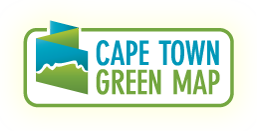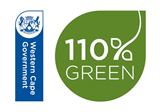Sustainable Living Icons
Includes designated and recommended bicycle paths or lanes. A dotted line shows the route. Use the icon to point the direction (east bound is also available). Note: different colours designate existing and proposed paths; to indicate different types (on street or separated path) or to show the safety of the route.
Good place to buy, borrow, repair or rent bicycles, work bikes and other kinds of human-powered vehicles. Can indicate bicycling organizations of all kinds, bike-friendly services and sites.
Place where food waste, leaves, garden and lawn cuttings are biodegraded into rich new soil. Can include large-scale or demonstration projects, drop-off sites, or places to buy locally produced compost, or to get information, worms and resources for indoor and garden composting.
Produced in accordance with green standards and / or end-product delivers an environmental benefit. At this site, they may be sold alongside conventional products, but a significant proportion of products should be eco-products.
Ideally products should be necessary (not gimmicks), safe, good quality, durable,
renewable / recycled / recyclable / carefully sourced, responsibly packaged, include options for disposal, locally produced and be made according to ethical business and labour practices. Appropriate standards may include organic, biodynamic and fair-trade certification.
Encompasses small-scale city farm to full-size rural farms that are organic, biodynamic or using other sustainable methods. Can be used to indicate organizations that make the link between urban communities and nearby farmers though community-supported agriculture (also known as CSAs or box schemes), 4H demonstration farms, agriculture schools or food security resources and networks
Ecological and socially conscious tourism that promotes energy efficiency, water/waste conservation, awareness and local economic opportunities in urban and rural settings. Sites of interest to visitors, including tours, a green hotel, hostel or eco-camping site. Ecotourism focuses on local culture heritage, nature, social benefit, volunteering and education.
A place that contributes to sustainable development by offering better trading conditions to, and securing the rights of, marginalized producers and workers without compromising natural resources. Fair trade organizations (backed by consumers) support producers, raise awareness and promote higher standards for international labour, environmentalism and social issues compared to the practices of conventional international trade.
Sells regionally grown produce. May sell organic or traditional foods in a lively permanent or temporary setting. Food does not travel far, so it’s fresh and nutritious. May sell flowers, craft items, baked goods, wine, wool, and even regional cookbooks. Shopping here directly supports small family farms, local economies and a greener countryside.
Practice of increasing the efficiency of buildings and their use of energy, water, and materials while reducing building impacts on health and the environment throughout the complete building life cycle by incorporating better siting, design, construction, systems, operation, maintenance and removal.
May include tours, suppliers, organizations and training programs. May be called a sustainable building, environmental building, natural building, sustainable design, green architecture and can include building certification such as LEED.
usiness or service that offers sustainable products and/or practices and includes resource conservation and environmental responsibility, corporate social responsibility (CRS), worker and community wellbeing.
Retail outlet whose major thrust is to sell a wide range of ecologically-conscious products (eco-products). 100% of all products may not truly be major improvements over conventional products, but the intention, method of production, materials, reductions of impacts in use, store policies, etc. address sustainability principles.
Renewable, alternative or other sustainable technology sites. May include clean technologies, zero emission, biomass and clean energy generation, new and appropriate technology sites. An eco-industrial park, low-tech initiative, research, pilot project, related agencies and funding sources can use this icon.
The emphasis is on wholesome, healthful, fresh foods, made with local and/or organic ingredients. Vegetarian and vegan foods (no animal products whatsoever) are served. Meat and dairy products are from ethically treated animals raised carefully to minimize environmental and health impacts, without additives, genetic modifications or factory farm practices. Endangered fish, marine and other species are not served. Cooperatively-owned cafes, cafes that grow their own food as well as "Slow Food" sites can be included, as can traditional or special local cuisines.
Local food grown very near to where it is consumed, so it has fewer ‘food miles’ that decrease freshness and increase ecological impacts associated with shipping long distances. Organic food grown without pesticides (biocides), genetic modification or synthetic fertilizers. No chemicals or waxes are added after harvesting. If processed, it is usually prepared in a way to maximize the nutritional value. May also include fair trade or direct trade practices.
Areas which favour walking over automobiles, such as pedestrian malls, plazas and traffic calmed areas that limit or restrict car traffic. Can indicate a route around an especially interesting area using a (dotted) line or line of icons. Walks or well-placed running paths can be established or recommended but should be non-intrusive to sensitive or protected areas.
Mass transit bus or train station. May include multi-modal transit hub served by one or more types of public transport systems. Bus stops may be mapped that are close to remote green sites.
Drop-off site for materials that can be reprocessed or refilled. Businesses that buy, work with or sell products made from recycled materials, information resources, and good examples of recycled materials in use. Businesses that collect materials for recycling from homes and businesses.
Place to sell and exchange reusable goods and antiques by barter, free or cash. May be a second-hand, thrift, charity shop or online resource. May be temporary or permanent.
Centre or resource for research in natural sciences, environmental studies and related sciences and technologies benefiting biodiversity and humanity. May be indoors or outdoors.
May include earth-built homes of natural materials such as adobe or straw, or other locally-sourced materials. This homemade housing often reuses materials and building elements.
A property, café, shop, residential complex, service or other business, co-operative or non-profit organisation that is cooperatively managed and/or benefits society. Eco-villages, communal projects, upliftment projects, copyright/cultural commons and even open source projects could be included here.
Place where you can see solar panels, passive solar examples and/or get information about this form of renewable energy. Includes buildings, organisations, training programmes, solar energy shops and contractors, government and utility company sites.
Includes waterwheels, tidal power and wave power, all generated by the water's natural movement. Sometimes called marine power. Not for large-scale dams or hydro-power projects which can devastate biodiversity both upstream and downstream.
Uses plants, aquatic animals, layered soils, movement, (constructed) wetlands and or/ swales to aerate, filter and purify water, without adding chemicals. Systems that slow the drainage in the built environment, grey water, rainwater gardens, rain barrels and other types of high and low technology water recycling systems that reduce consumption can be included.
Accessible ramps, rails, elevators and other facilities provided for people with disabilities. Encourage exploration of nature trails and park areas with this icon. (Useful for baby carriages and market carts, too).
Wind turbines and windmills that harness energy generated by the wind are located on this site. Can be a small system or a large grid electricity generating facility. Can indicate wind power information resources or a site that offsets its electricity needs with wind power.









